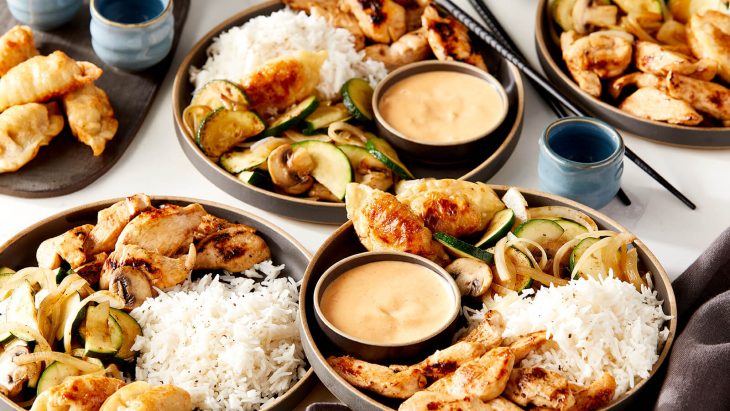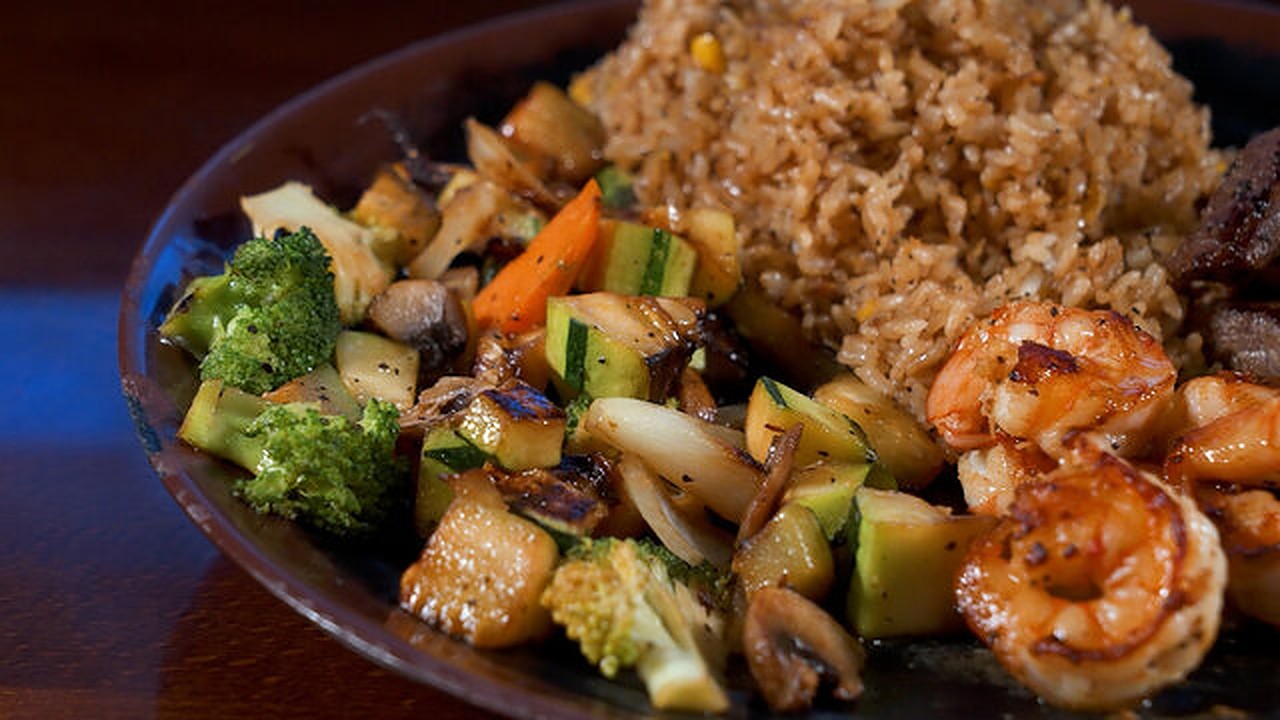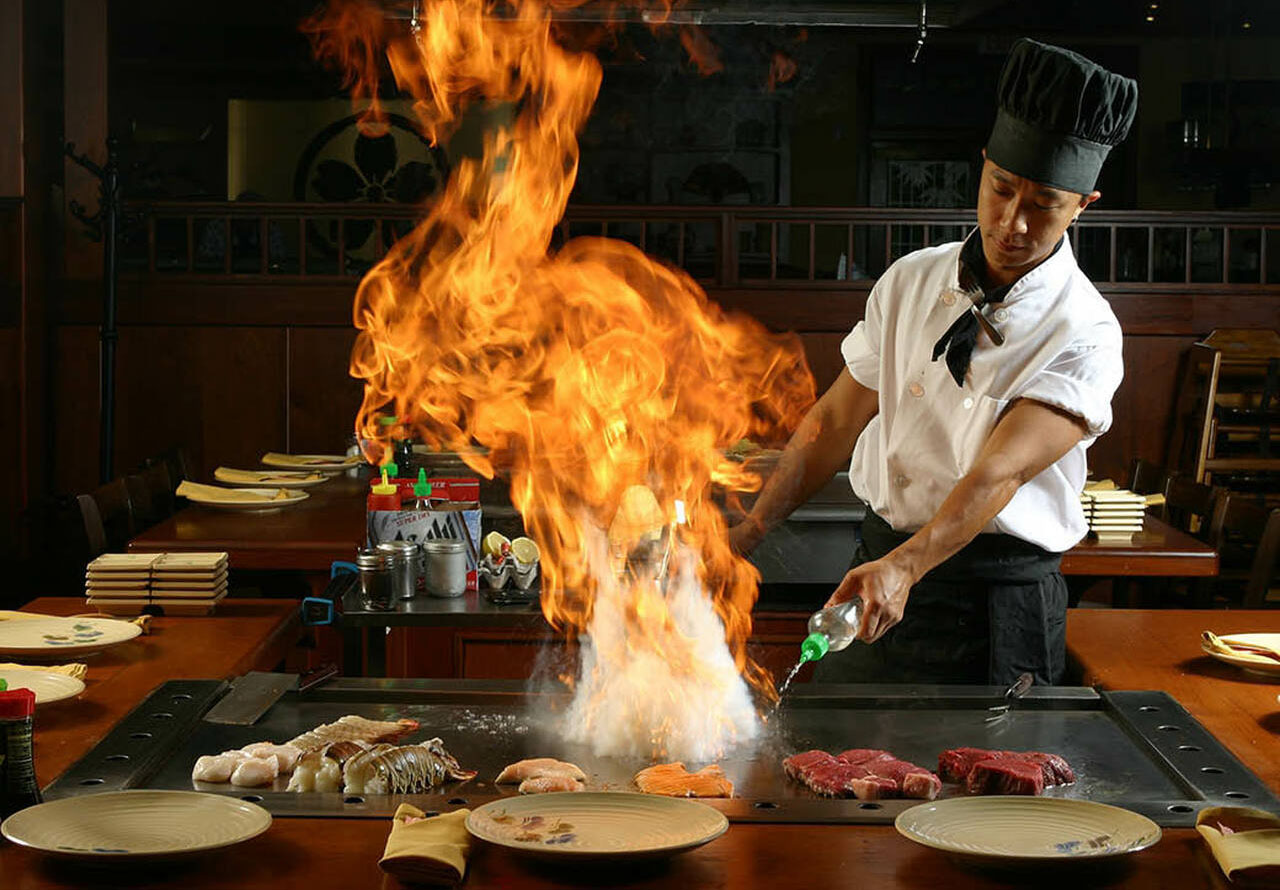
Hibachi, a popular style of Japanese cuisine, has gained widespread popularity for its flavorful dishes and entertaining cooking techniques. Whether you’re enjoying grilled meats, fresh vegetables, or savory sauces, hibachi offers a unique dining experience. In this article, we will explore 15 interesting hibachi nutrition facts, shedding light on the health benefits, nutrient composition, and considerations of this delicious cuisine. From protein-rich meats to vibrant vegetables, hibachi can be enjoyed as part of a balanced diet. Let’s dive into the nutritional aspects of hibachi and discover its potential impact on your well-being.
Lean Protein Sources
Hibachi meals often feature lean protein sources such as chicken, shrimp, and steak. These proteins are rich in essential amino acids and contribute to muscle growth, repair, and overall health.
The abundance of Fresh Vegetables
Hibachi dishes are typically accompanied by a colorful assortment of fresh vegetables, including onions, zucchini, mushrooms, and broccoli. These vegetables provide an array of vitamins, minerals, and dietary fiber.
Nutrient-Dense Seafood
Hibachi often includes seafood options like shrimp or scallops, which are excellent sources of omega-3 fatty acids, essential for heart health and brain function.

Moderate Sodium Content
While hibachi sauces and seasonings add flavor to the dishes, it’s important to be mindful of the sodium content. Some hibachi sauces may be high in sodium, so it’s advisable to enjoy them in moderation, especially if you have specific dietary restrictions.
Balanced Macronutrient Profile
Hibachi meals typically provide a balanced combination of macronutrients, including carbohydrates, proteins, and fats. This balance can help maintain stable blood sugar levels and provide sustained energy throughout the day.
Versatile Cooking Techniques
Hibachi cooking techniques involve grilling, stir-frying, and searing, which help retain the nutritional value and flavors of the ingredients. These cooking methods often require minimal added fats, making hibachi a relatively healthy choice.

Customization Options
One of the advantages of hibachi dining is the ability to customize your meal. You can choose the protein, vegetables, and sauces based on your preferences and dietary needs, allowing for a personalized and balanced meal.
Limited Fried Foods
Unlike some other Asian cuisines, hibachi generally involves minimal deep-frying. This reduces the overall calorie and fat content of the dishes, promoting a healthier dining experience.
Source of Essential Minerals
Hibachi ingredients, such as mushrooms, onions, and leafy greens, provide essential minerals like potassium, magnesium, and iron. These minerals play vital roles in maintaining various bodily functions.
Moderation in Sauces and Condiments
While hibachi sauces can be flavorful and delicious, they may contain added sugars and fats. It’s advisable to use them in moderation or opt for lighter options to maintain a balanced diet.
Increased Vegetable Consumption
Hibachi dining often encourages increased vegetable consumption, as these colorful additions provide essential nutrients, antioxidants, and dietary fiber. They can support digestion, promote satiety, and contribute to overall well-being.
Mindful Portion Control
When enjoying hibachi, portion control is essential. The generous portions often served can lead to overeating. By being mindful of portion sizes, you can savor the flavors while maintaining a balanced intake.
Healthier Cooking Methods
Hibachi cooking methods, such as grilling and stir-frying, help retain the natural flavors and nutrients of the ingredients. These methods require less added fats and promote healthier cooking overall.
Enjoyment of Social Dining
Hibachi dining is often a social experience, where meals are prepared and enjoyed together. The communal atmosphere and shared enjoyment can contribute to positive mental well-being.
Versatility for Dietary Preferences
Hibachi cuisine offers versatility for various dietary preferences, including vegetarian and gluten-free options. With customizable ingredients and sauces, individuals with specific dietary needs can still enjoy a delicious hibachi meal.
Conclusion
Hibachi cuisine brings together delicious flavors, fresh ingredients, and entertaining cooking techniques. It offers a range of health benefits, including lean proteins, abundant vegetables, and versatile cooking methods. By being mindful of portion sizes, sauce choices, and overall dietary balance, hibachi can be enjoyed as part of a healthy lifestyle. Embrace the vibrant colors and savor the flavors while appreciating the nutritional benefits of hibachi dining.
Frequently Asked Questions (FAQs)
Is hibachi food considered healthy?
Hibachi food can be a healthy choice when balanced with lean proteins, fresh vegetables, and mindful portion control. It offers an abundance of nutrients and can be tailored to suit various dietary preferences.
Can hibachi be a part of a weight loss diet?
Hibachi can be included in a weight loss diet with proper portion control and mindful choices. Opting for lean proteins, vegetables, and lighter sauce options can help create a balanced meal.
Are there vegetarian options available in hibachi cuisine?
Yes, hibachi restaurants often offer vegetarian options such as tofu or vegetable stir-fry. These options provide protein, fiber, and a variety of nutrients.
What should I consider if I have specific dietary restrictions?
If you have specific dietary restrictions, it’s important to communicate your needs to the hibachi chef or restaurant staff. They can help accommodate your preferences and provide suitable options.
Can hibachi be enjoyed as part of a balanced diet?
Yes, hibachi can be enjoyed as part of a balanced diet by incorporating lean proteins, vegetables, and whole grains. Moderation, portion control, and mindful choices are key to maintaining a healthy balance in your overall diet.
Was this page helpful?
Our commitment to delivering trustworthy and engaging content is at the heart of what we do. Each fact on our site is contributed by real users like you, bringing a wealth of diverse insights and information. To ensure the highest standards of accuracy and reliability, our dedicated editors meticulously review each submission. This process guarantees that the facts we share are not only fascinating but also credible. Trust in our commitment to quality and authenticity as you explore and learn with us.
